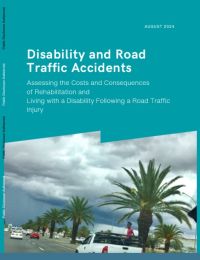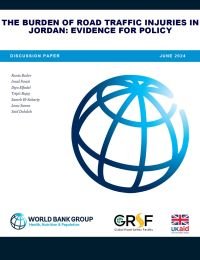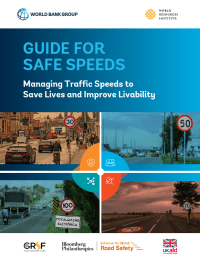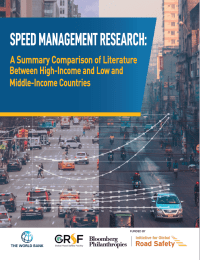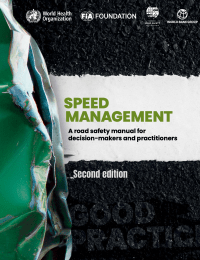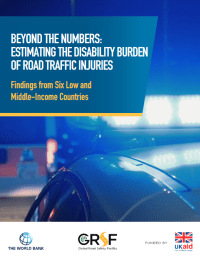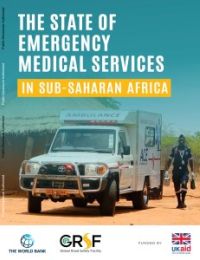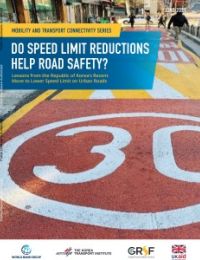Publications
1-10 of 22
-
-
-
Speed Management
Guide for Safe Speeds: Managing Traffic Speeds to Save Lives and Improve Livability
March 2024
-
Speed Management
Speed Management Research: A Summary Comparison of Literature Between High-Income and Low and Middle-Income Countries
February 2024
-
Speed Management
Speed Management: A Road Safety Manual for Decision-Makers and Practitioners (2nd ed.)
November 2023
-
Post-Crash Health Care
Beyond the Numbers: Estimating the Disability Burden of Road Traffic Injuries
November 2023
-
-
Speed Management
Road Crash Trauma, Climate Change, Pollution and the Total Costs of Speed: Six Graphs That Tell the Story
July 2022
-
Speed Management
Guide for Determining Readiness for Speed Cameras and Other Automated Enforcement
July 2022
-
To briefly identify the powerful practical value of AE in saving lives and reducing injuries.
-
To identify issues and criteria to be considered before commencing automated enforcement. To identify steps to be taken to achieve readiness for automated enforcement. To identify issues to improve existing automated enforcement systems.
-
To provide a checklist to ensure adequate consideration is given to issues to assess readiness to implement an AE system or improve an existing system.
- Evaluate the effectiveness of the reduced speed limits in terms of crash reduction through a before-after study.
- Examine if the speed limit change had different effects across different crash types, user types, and crash severities.
- Evaluate the impact of speed limit change on transit speed through a before-after assessment.
- Develop appropriate and actionable recommendations for departments of transportation in developing countries.
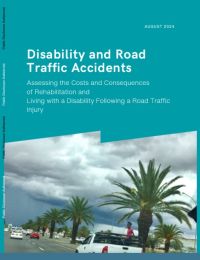
This GRSF-funded study explores the medical, economic, and social costs of road traffic accidents (RTAs), particularly focusing on individuals with permanent disabilities. According to the World Health Organization (WHO), RTAs are a global public health crisis, ranked as the 12th leading cause of death and the primary cause of mortality among children and young adults. While the UN's Decade of Action for Road Safety (2021–2030) aims to reduce RTA deaths, the study argues that more focus is needed on injuries and the long-term impact on those left disabled by RTAs.
Building on GRSF’s report Beyond The Numbers: Estimating the Disability Burden of Road Traffic Injuries (Mitra et al., 2023), this project examines data from Namibia and South Africa and interviews with experts to highlight the often-overlooked challenges faced by RTA-related disability survivors. These individuals encounter unique issues—such as brain injuries, psychological trauma, and sudden financial burdens—that require specific support mechanisms beyond general disability frameworks.
Economic losses from RTAs are substantial, with WHO estimating global costs up to $1.8 trillion annually. However, existing research focuses mainly on medical costs and productivity losses, neglecting broader social impacts. Data on the prevalence of permanent disabilities varies, underscoring the need for standardized research.
The study calls for integrating disability concerns into road safety policies, emphasizing that improved enforcement in low- and middle-income countries could prevent disabilities and reduce societal costs. Ultimately, it advocates for recognizing RTA-related disabilities as a critical issue within global health, disability policy, and development agendas.
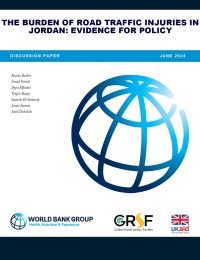
Road traffic injuries (RTIs) are a critical public health issue in Jordan, as highlighted in the 2022 Annual Report of Traffic Accidents from the Jordan Public Security Directorate. With 169,409 crashes recorded in 2022, resulting in 562 deaths and 11,510 injuries, RTIs have emerged as the leading cause of death for children and young people, and the second-leading cause for adults aged 20–64.
This analytical research study aims to understand RTI-induced disabilities in Jordan, identify contributing factors, and assess the associated costs for road traffic crash victims. Using a mixed-methods approach, the research included quantitative and qualitative data collection through hospital-based surveillance and follow-up surveys at one- and three months post-injury. The study involved six public and private hospitals across Jordan. Key informant interviews with stakeholders from various sectors were conducted to gain comprehensive insights.
The study's findings reveal that most RTI patients were male (79%) with an average age of 34 years. Crashes predominantly occurred during early mornings and night hours, involving mainly cars (72%) and motorcycles/bicycles (40%). A significant number of patients (74%) received prehospital care, primarily from ambulance staff. Most patients (66%) were fully conscious upon arrival at the emergency room.
Injury analysis showed that 58% of patients had a single injury, with extremities being the most affected area. Financially, 49% of patients incurred immediate costs upon hospital admission, and follow-up care also resulted in out-of-pocket expenses, particularly for physiotherapy and medications.
The study indicated that 79% of patients experienced some disability at the one-month follow-up, with varying degrees from mild to extreme. By the third month, 73% reported no disability, though 26% continued to experience mild impairments.
This study underscores the significant burden of RTIs and associated disabilities in Jordan, highlighting the need for targeted interventions to reduce injuries and robust long-term care to support affected individuals.

Speed is one of the main road safety risk factors and is universally recognized as the leading contributor to road fatalities and serious injuries. But there is good news: the speed problem is solvable. Interventions that are proven to be effective exist, and it is well understood where and how they should be applied.
The newly published “Guide for Safe Speeds: Managing Traffic Speeds to Save Lives and Improve Livability” outlines interventions that work and provides guidance on how to select and implement speed limits that are safe for all road users. It also explains how barriers to changing traffic speeds—which are often based on lack of knowledge or misunderstandings—can be overcome.
A primary feature of the guide is its comprehensiveness. The guide covers all types of roads—from city streets to inter-urban roads and motorways (existing or new); all types of road users—from vulnerable road users such as pedestrians and cyclists to heavy motorized traffic; all types of speed limit changes—from national general speed limits to localized changes based on risk factors; all types of challenging constraints—from lack of resources to lack of data; and all types of countries—from low-income to high-income.
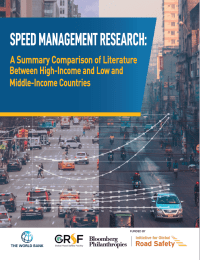
Low- and middle-income countries (LMICs) have been experiencing growth in vehicle travel and mobility but have not yet realized road safety gains experienced by high-income countries. Excessive and inappropriate speed is known to be a major cause of road crashes, injuries and deaths. Thus, speed management is considered a key initiative for improving road safety outcomes worldwide and has been applied successfully in most high-income countries.
Proven interventions do not necessarily have the same impacts in LMICs, or may not be feasible to apply, due significant differences in traffic mix, road user behavior, road design and vehicle standards.
This document summarizes current available knowledge about speed, its effects on safety, mobility and emissions, along with potential safety effectiveness of speed management initiatives in the LMIC context. Knowledge gaps for LMICs are clearly referenced for further consideration.
The knowledge summary provides a useful reference for practitioners wishing to inform themselves about traffic speeds, their selection and impacts on safety outcomes, mobility and emissions. The LMIC knowledge gaps will be useful in considering future research and data priorities.

The WHO, World Bank, FIA Foundation and Global Road Safety Partnership (GRSP) produced a series of good practice manuals, following the publication of the World report on road traffic injury prevention in 2004, which provide guidance on implementation of interventions to address specific risk factors in road safety. The topics covered in the initial series of manuals were: helmets (2006), drinking and driving (2007), speed management (2008), seat-belts and child restraints (2009), data systems (2010), pedestrian safety (2013), road safety legislation (2013), powered two- and three-wheeler safety (2017) and cyclist safety (2020).
Since the series of manuals was first published, the scientific evidence base relating to various risk factors and the effectiveness of interventions have continued expanding. Contemporary research has refined our knowledge about specific risk factors, such as distracted driving, and vehicle impact speed and risk of death for pedestrians. New issues and practices have arisen, such as a tropical helmet standard and an anti-braking control standard for motorcycles. New and existing interventions have been implemented and evaluated, with increasing application in LMICs. Research attention and policy response have also increasingly been applied to emerging road safety issues including e-bikes, drugs other than alcohol, fleet safety, urban mobility, micro mobility options, air and noise pollution, public transport and technological advances.
As a result of these developments, the good practice manuals required revision so that they can continue to be key references for road safety policy implementation and research. This is particularly important, given the emphasis placed on road safety within the framework of the 2030 Agenda for Sustainable Development and because of the global impetus to reduce road deaths and injuries, resulting from the declaration of the two United Nations’ Decades of Action for Road Safety (2011–2020 and 2021– 2030). The manuals have been revised to reflect these developments as they continue to be valuable resources providing evidence-based and cost-effective solutions to save lives and reduce injuries.
The management of speed remains one of the biggest challenges facing road safety practitioners around the world and calls for a concerted, long-term, multidisciplinary response. The speed at which a vehicle travels directly influences the risk of a crash as well as the severity of injuries sustained, and the likelihood of death resulting from that crash. This manual advocates for a strong and strategic approach to creating a Safe System, with speed management at its heart. Reducing motor vehicle speeds in areas where the road user mix includes a high volume of vulnerable road users, such as pedestrians and cyclists, and on non-divided rural roads, is especially important.
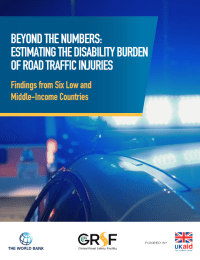
It is well-documented that road crashes claim around 1.35 million lives each year and rank as the eighth leading cause of death globally, causing huge burdens for economies, health systems, and transport networks. However, beneath the sobering fatality statistics lies a largely unexplored landscape: the staggering toll of disabilities induced by road crashes. Until now, the focus of road safety research and policy discourse has predominantly revolved around fatalities, which has limited our understanding of traffic-related injuries and disability burdens at the individual, community, and national level.
To address this critical knowledge gap, this pioneering study—involving over 2,300 patients hospitalized for road crash injuries—provides valuable insights into the prevalence, causes, and long-term impacts of crash-related disabilities. By broadening the discussion beyond fatalities to the often-overlooked issue of disability, the report paves the way for a more holistic perspective on road safety impacts, which can inform more effective road safety policies.
This report is a call to action for comprehensive and context-specific interventions that encompass both the transport and health sectors. Effective measures may include implementing safety regulations, enhancing emergency services, strengthening rehabilitative care, and expanding social safety nets to ease the financial burden on crash survivors. Collaborative efforts between governments, global and regional organizations, civil society, and other stakeholders will be indispensable.
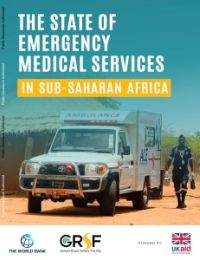
An evaluation of the various Emergency Medical Services (EMS) models and mechanisms in place in Sub-Saharan Africa (SSA) is critical in order to have a better understanding of what can be improved upon for effective pre-hospital and emergency care services (PECS). With grant funding provided by the World Bank’s Global Road Safety Facility (GRSF), this report aims explore the State of EMS Systems in Sub-Saharan Africa through a review of the models and mechanisms being developed across various States.
The premise of the report focuses on the fundamentals for effectively providing satisfactory treatment to those in need of urgent medical care, while also recognizing that there are multiple pathways, framed by the respective legislative, legal and regulatory enabling environments, towards a more formal and sustainable EMS model. It represents an effort to identify the major similarities and differences, as well as potential opportunities for greater coordination or collaboration, that can lead to the development of sound policy recommendations for fostering and expanding post-crash response services in the region.
High-level system information has been collected through questionnaires distributed to National Respondents in each country, for which 25 of 44 countries substantially responded as of April 2019 (collectively hereinafter referred to as SSA countries): Botswana, Burkina Faso, Burundi, Cabo Verde, Cameroon, Central African Republic, Chad, Comoros, Congo Brazzaville, Gabon, Lesotho, Liberia, Madagascar, Malawi, Mauritania, Niger, Rwanda, Senegal, Sierra Leone, Sudan, Tanzania, Togo, Uganda, Zambia and Zimbabwe. Missing data and discrepancies triggered a detailed review of laws and other regulatory acts, policy and plan.
The Report does not consider the advantages and disadvantages for the EMS models adopted by SSA countries, nor does it take a position on which regulatory approach should be applied, or measure the degree of EMS standards implementation and the success or failure of implementing various EMS policies. The principal aim of this report is to capture the current range of the standards and regulations in key areas of EMS systems across SSA.
The State of Emergency Medical Services in Sub-Saharan Africa is supported by UK Aid through the World Bank’s Global Road Safety Facility.

What is the real cost of speeding on people and the environment? These 6 graphs tell the story ⌵︎
The impacts of speed on the safety of road users, on congestion, on pollution, and on total costs of road travel are broadly misunderstood: often based on wrong assumptions, with effects taken as self-evident, failure to consider multiple impacts, externalization of costs by many stakeholders, and under-estimation of impacts (especially economic costs of higher speeds). The purpose of this brief note is to provide information on these relationships relevant to fundamental road transport policies, design, and operation. Well-established evidence shows the importance of managing travel speeds for road safety, for efficiency, for improved inclusion, and for greenhouse gas (GHG) and other emissions. Thus, speed management is a strong policy lever for the breadth of issues which must be addressed for sustainable mobility.
Reduced speeds of travel represent a major, yet under-appreciated, opportunity to improve safety, climate change impacts of travel, health, inclusion, the economy, and in some circumstances, congestion. Speed management can be achieved through a range of interventions including road infrastructure and vehicle technology, as well as enforcement and promotion.
The six graphs presented in this note tell a powerful story, across the range of these benefits of speed management.
This publication is also available in:

This guide has been prepared to assist a jurisdiction to determine the level of readiness to move to automated enforcement (AE). Speed cameras enforcing speed limits are a common application of AE and there are many systemic legal and operational elements that must be in place before AE can be effective. For example, an accurate image of a speeding vehicle, in the absence of robust driver licensing and vehicle registration systems, is of little road safety value. Importantly, automated speed enforcement should be considered as one part of a comprehensive speed management approach that includes road infrastructure and roadside policing as well. The management of speed is a fundamental element of the Safe System.
Aims of this document:
Other illegal behaviours, including disobeying a red light signal, mobile or cellular phone use, incorrect lane use, and non-restraint use can also be detected using an automated enforcement approach. However, this document applies specifically to automated speed enforcement, because speed management requires significant attention worldwide and plays a critical role in reducing road traffic deaths and injuries.
Document also available in French, Portuguese, Vietnamese and Spanish.
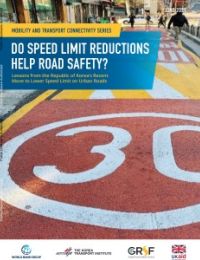
Significant research has been undertaken on how changes in speed limit—for example, the introduction of 30 kilometers per hour, or kph (20 miles per hour, or mph) speed limits—impact safety both when combined with, and without "traffic-calming" engineering treatments such as speed humps or raised platforms. However, most of the studies have been conducted in Australia or countries in Western Europe, with almost no recorded studies from Asia, Africa, the Americas, and Eastern Europe. Though it may be reasonable, a well-developed infrastructural environment such as that found in Korea would expect similar results as that of the western countries, a study originating in Asia could have a strong demonstration effect and prove very convincing for many Asian countries.
With this in mind, the main aim of this study is to present the findings from Korea’s reduced speed limits on safety performance and to support the establishment of suitable speed-management strategies based on a quantitative data-driven approach. The scope of the project was as follows:
To start, this report first provides a brief literature review on the concept of Safe System speed limits, and the effect of speed limit reductions as part of speed management in several countries, followed by a brief description of the evaluation methods for the before-after assessment. This is followed by a summary of the findings, a set of recommendations, limitations of this study, and finally, a capsule of future research that could be undertaken to either extend or follow up on the study.

